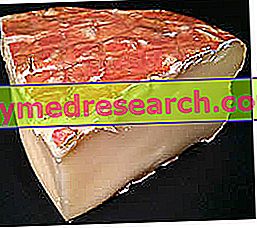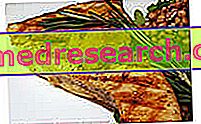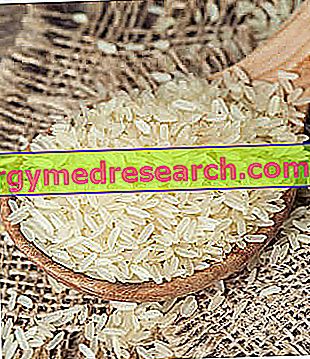Generality
Taleggio is a typical Lombard cheese. It is a typical dairy product from the Taleggio Valley of Bergamo that in 1988, thanks to its characteristics of "typicality", obtained the Protected Designation of Origin (DOP).

Before acquiring the name of the area of origin, this milk derivative was simply called "stracchino".
Description of the Taleggio: Taleggio is a cow's cheese made from pasteurized whole milk and raw pasta. It has a parallelepiped shape, flattened, weighing 1.7-2.2kg, with a red and light green pigmented surface crust. At the heart of the cheese the dough is more consistent, while towards the crust it acquires more creaminess. Taleggio is obtained by inoculation of biological starters but the typical seasoning (just over a month) is due to the colonization of native bacterial and fungal strains of the ripening sites.
Taleggio production: the process for the production of the Taleggio involves heating the milk (at about 35 ° C), the grafting of the biological starter (consisting of a portion of acidified serum from the previous day or a technological selection of Lactobacillus with Streptococcus ) and then the addition of cow's rennet.
| Nutritional composition of Taleggio - Reference Values of Food Composition Tables - INRAN | ||||||||||||||||||||||||||||||||||||||||||||||||||||||||||||||||||||||||||||||||||||
 | ||||||||||||||||||||||||||||||||||||||||||||||||||||||||||||||||||||||||||||||||||||
Nutritional values (per 100 g of edible portion)
| ||||||||||||||||||||||||||||||||||||||||||||||||||||||||||||||||||||||||||||||||||||
At this point the curd is formed and, with well-formed coagulation, the first of the two "breaks" of the dough is applied; initially it splits into large pieces and is left to rest for about a quarter of an hour (in order to allow the whey to drain from the block), while the second break occurs by means of the "tas" (a well sharpened brass instrument).
Immediately afterwards, the curd (reduced to small pieces) is placed in the inclined molds and covered with natural or synthetic mats (about 20cm x 20cm x 6cm), then left to stew for about 18 hours in rooms with high humidity and temperature of about 28 ° C. During this process the taleggio is turned several times and marked.
Finally, the forms of taleggio are salted (with salt or brine) and transferred to low-temperature environments (slightly> 0 ° C) for aging. This, which lasts about a month, provides for further salting and humidification by "sponging" of brine (weekly cadence), in addition to a fairly frequent turning.
NB : salting and sponging with brine have the function of keeping the Taleggio crust moist and, at the same time, limiting the onset of mold (especially Penicillium ) and some pathogens (including Listeria ) favoring the desired bacterial proliferation of surface ( Staphylococcus, Microbacterium etc.).
Taleggio in the kitchen
Taleggio is a "table" cheese. It has a fat content of almost 48%, the dough is soft, creamy and thin. It exudes a strong scent that sometimes preserves a pleasant truffle scent.
In addition to consumption aimed at itself, the taleggio is frequently used melted on polenta, in first courses in general and on grilled vegetables. The ideal oenological combination for taleggio is with a Verdicchio-type white from the Castelli di Jesi or with a red Oltrepò Pavese Pinot Nero.
Nutritional properties
Taleggio is a highly energetic food of animal origin, probably rich in saturated fatty acids and cholesterol (even if the precise reference values are missing), which is why it is not recommended for frequent use and in considerable portions to all subjects in overweight and / or suffering from hypercholesterolemia.
Taleggio is also rich in sodium, an element potentially responsible for the increased risk of high blood pressure. On the other hand, from a saline and vitamin point of view, the cheese is abundant in vitamin B2 (riboflavin) and calcium.



